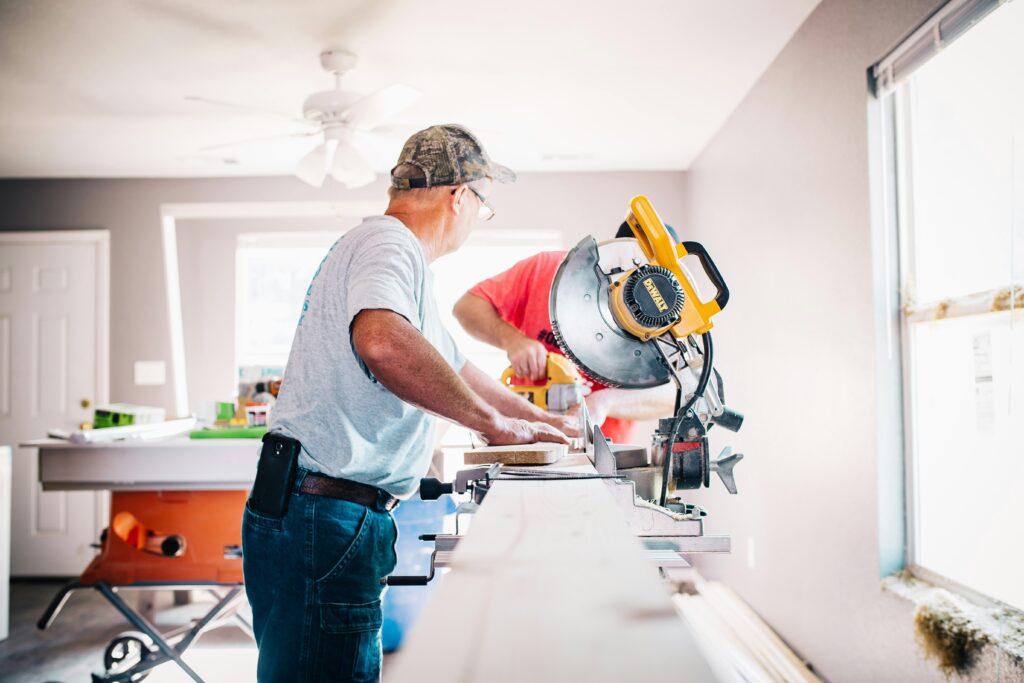Home remodeling projects can transform your living space and increase the value of your property. However, they can also become financial headaches if not planned properly. Unexpected expenses are common, but with a solid budgeting strategy, you can minimize surprises and keep your project on track. Here’s a comprehensive guide to help you budget for your home remodeling project effectively.

Start with a Clear Vision
Before diving into numbers for a budget, determine exactly what you want from your remodeling project. Whether you’re planning a full home renovation or focused on a specific area like a Utah kitchen remodeling project, having a detailed plan helps you avoid scope creep—one of the leading causes of budget overruns.
Create a vision board or a list of must-have features and prioritize them. Knowing what is non-negotiable and what can be adjusted will help you allocate resources wisely.
Establish a Realistic Budget
Determine how much you can afford to spend. This should include funds from savings, loans, or home equity lines of credit. Set a ceiling amount and aim to stay well below it to leave room for contingencies.
Research average remodeling costs for projects similar to yours. For instance, kitchen remodels typically range from $15,000 to $50,000 depending on size and complexity. Use these figures as a starting point.
Break Down the Costs in the Budget
To create a thorough budget, break down expenses into categories. Common categories include:
- Labor costs: Contractors, designers, and specialized workers.
- Materials: Flooring, cabinetry, countertops, appliances, and fixtures.
- Permits and inspections: These vary by location but are necessary for structural changes or significant renovations.
- Unexpected repairs: Issues like mold, plumbing leaks, or outdated wiring might only be discovered during the remodel.
- Finishing touches: Paint, hardware, and décor.
Assign estimates to each category. Tools like spreadsheets or budgeting apps can help you organize this information.
Get Multiple Estimates
Hiring contractors or professionals is often the largest expense in a remodeling project. To get the best value, solicit at least three detailed bids from reputable contractors. These bids should include labor, materials, and timelines.
Ensure each contractor has experience in the type of remodeling you’re planning. For example, when working on a kitchen remodeling project, hire a contractor with a proven track record of kitchen designs and renovations in your area.
Budget Should Include Contingencies
No matter how well you plan, surprises can and will happen. Set aside at least 10–20% of your total budget for unexpected costs. This cushion can cover anything from unforeseen structural issues to price fluctuations in materials.
Being prepared reduces stress and prevents you from derailing the project if surprises arise.
Choose Materials Wisely
Your choice of materials significantly impacts your budget. High-end finishes and custom features add beauty but can inflate costs. Compare different options and consider mixing premium and budget-friendly materials to strike a balance between aesthetics and affordability.
For example:
- Opt for quartz countertops instead of marble for durability and cost-effectiveness.
- Choose stock cabinets over custom-built ones for significant savings.
Keep in mind that quality materials can reduce maintenance and replacement costs in the long run.
Understand Payment Terms Before Signing
When working with contractors or suppliers, clarify payment terms upfront. A typical payment schedule includes:
- An initial deposit (10–15% of the total cost).
- Progress payments during key milestones.
- A final payment upon completion.
Avoid paying the full amount upfront to ensure accountability and quality. Always have a signed contract detailing payment terms, timelines, and project specifications.
DIY Strategically
If you have the skills and time, tackling some tasks yourself can lower costs. Painting, demolition, and minor installations are great areas to save. However, leave specialized tasks like electrical work and plumbing to professionals to avoid costly mistakes.
Track the Budget Regularly
During the project, monitor expenses to ensure you’re staying within budget. Keep all receipts and invoices organized and compare them to your initial estimates. Regularly communicate with your contractor to address potential overruns promptly.
Avoid Last-Minute Changes
Making changes during a project can be costly. Each alteration may require reworking designs, ordering new materials, or adjusting timelines—all of which increase expenses. Stick to your original plan as much as possible to avoid unnecessary costs.
Seek Professional Advice
Consulting a financial advisor or a remodeling consultant can help you create a feasible budget and identify potential pitfalls. They can also provide insights into local market conditions and ensure you’re making informed decisions.
Budgeting for a home remodeling project requires careful planning and disciplined execution. By having a clear vision, breaking down costs, planning for contingencies, and tracking your spending, you can avoid most surprises and enjoy a successful renovation. Whether it’s a bathroom overhaul or a kitchen remodeling project, these tips will help you achieve your goals while keeping finances in check.

One comment on “How to Budget for a Home Remodeling Project Without Surprises”